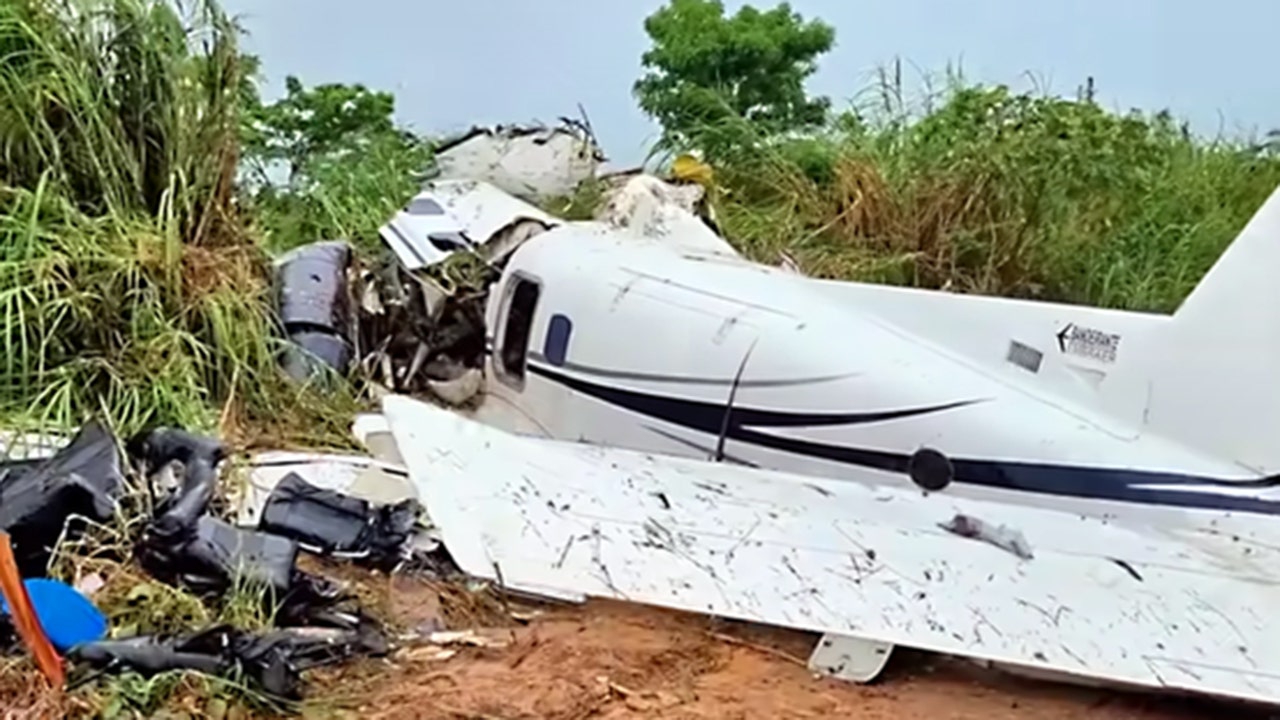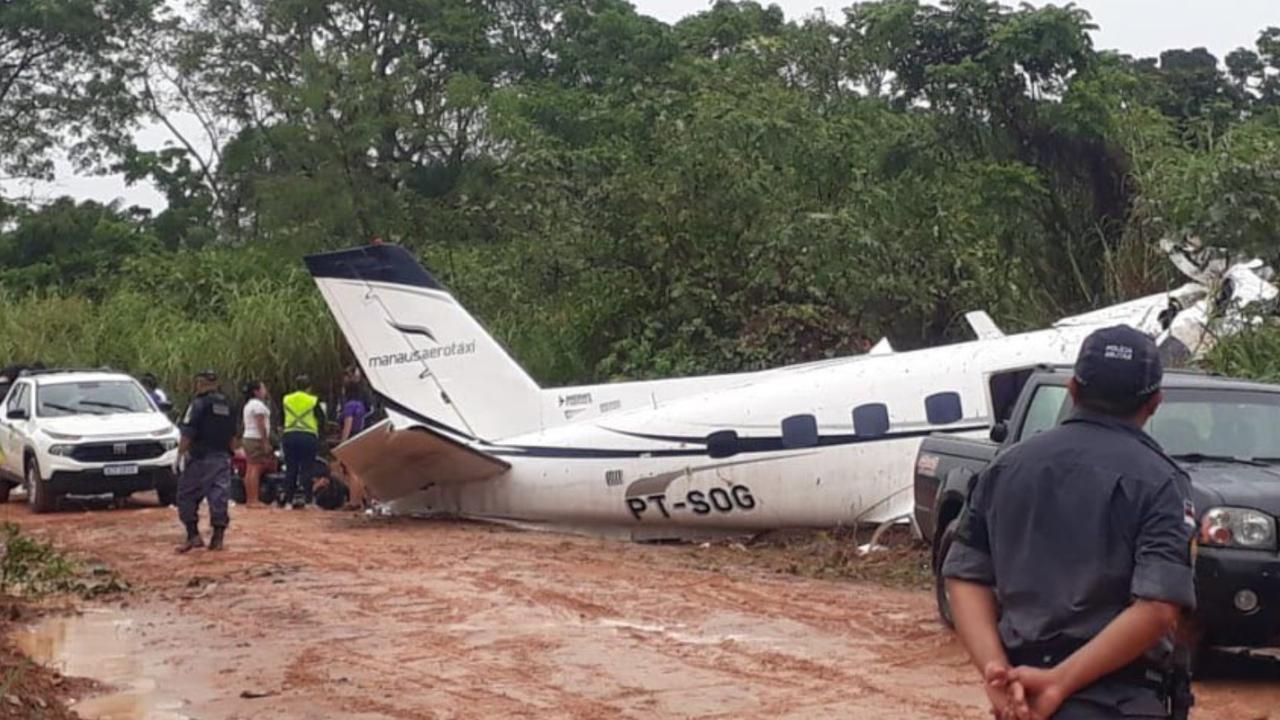Historical Context of Plane Crashes in Brazil: Plane In Brazil Crash

Brazil, with its vast geographical expanse and thriving aviation industry, has unfortunately witnessed its share of tragic plane crashes throughout history. These incidents have not only resulted in immense loss of life but have also significantly impacted the nation’s aviation landscape, leading to a continuous evolution of safety regulations and technological advancements.
Major Plane Crashes in Brazil and their Impact
The history of aviation in Brazil is intertwined with several notable plane crashes that have left a lasting impact on the nation’s aviation safety standards. These incidents have prompted investigations, reforms, and technological advancements, shaping the country’s approach to air travel.
- 1982 – Varig Flight 820: This tragic incident involved a Boeing 737 that crashed in the Amazon rainforest, killing 137 people. The investigation revealed that the crash was caused by a combination of factors, including pilot error, mechanical failure, and adverse weather conditions. This crash prompted a thorough review of aviation safety procedures and regulations in Brazil, leading to stricter training standards for pilots and improved maintenance protocols for aircraft.
- 1989 – TAM Airlines Flight 402: A Fokker 100 aircraft operated by TAM Airlines crashed on takeoff from São Paulo’s Congonhas Airport, killing all 96 people on board. The investigation concluded that the crash was caused by a combination of factors, including pilot error, mechanical failure, and inadequate airport infrastructure. This incident led to significant upgrades in airport infrastructure and safety protocols at Congonhas Airport, including the installation of a new runway and the implementation of stricter safety regulations.
- 2006 – Gol Transportes Aéreos Flight 1907: This tragic incident involved a Boeing 737-800 that collided with a small private plane over the Amazon rainforest, killing all 154 people on board. The investigation revealed that the crash was caused by a combination of factors, including pilot error, inadequate air traffic control procedures, and the lack of a collision avoidance system. This incident led to significant changes in air traffic control procedures and the mandatory installation of collision avoidance systems on all commercial aircraft operating in Brazil.
- 2007 – TAM Airlines Flight 3054: A Boeing 737-800 operated by TAM Airlines overran the runway at São Paulo’s Congonhas Airport, crashing into a hangar and causing a fire that killed 199 people. The investigation concluded that the crash was caused by a combination of factors, including pilot error, mechanical failure, and inadequate runway conditions. This incident led to further upgrades in airport infrastructure and safety protocols at Congonhas Airport, including the installation of a new runway, the implementation of stricter safety regulations, and the development of a new system to prevent aircraft from overrunning the runway.
Analysis of Common Causes of Plane Crashes in Brazil
Brazil has a long and complex history of aviation, with a significant number of plane crashes occurring over the years. Analyzing the common causes of these crashes is crucial for understanding the contributing factors and implementing preventative measures to improve aviation safety.
Pilot Error
Pilot error is a significant contributor to plane crashes globally, and Brazil is no exception. Factors contributing to pilot error include:
- Lack of experience or training
- Fatigue
- Misjudgment of weather conditions
- Failure to follow procedures
For instance, in 2006, a TAM Airlines Boeing 737 crashed in São Paulo, killing 199 people. The investigation revealed that the pilot, due to fatigue and poor judgment, had miscalculated the aircraft’s position and failed to properly execute a go-around procedure, leading to a runway overrun and collision with a fuel truck.
Mechanical Failure, Plane in brazil crash
Mechanical failure can lead to catastrophic events in the air. This category includes:
- Engine failure
- Structural failure
- Hydraulic system failure
- Electrical system failure
A notable example is the 2007 crash of a Gol Airlines Boeing 737 over the Amazon rainforest. The investigation revealed that the crash was caused by a bird strike that damaged the aircraft’s engine, leading to a loss of control and subsequent crash.
Weather Conditions
Adverse weather conditions can significantly impact flight safety, including:
- Thunderstorms
- Turbulence
- Fog
- Heavy rain
In 2016, a Brazilian Air Force C-97 aircraft crashed during a training flight in the state of Rio Grande do Sul. The investigation determined that the crash was caused by severe thunderstorms and heavy rain, which led to a loss of control and subsequent impact with the ground.
Terrorism
While terrorism is not a frequent cause of plane crashes in Brazil, it remains a potential threat.
The 9/11 attacks in the United States, which involved the hijacking and deliberate crashing of commercial airliners, highlighted the potential for terrorism to disrupt aviation safety.
In 2017, Brazilian authorities arrested a group of individuals suspected of planning a terrorist attack on a plane. This incident serves as a reminder that the threat of terrorism is ever-present, and vigilance is essential for maintaining aviation security.
Plane in brazil crash – The recent plane crash in Brazil has brought back chilling memories of similar tragedies around the world. One type of aircraft that has been involved in several accidents is the ATR 72, which has a history of safety concerns.
A detailed look at ATR 72 crashes reveals that while some incidents are due to pilot error, others highlight potential design flaws that need to be addressed. While the cause of the Brazilian crash is still under investigation, it serves as a stark reminder of the importance of rigorous safety standards and continuous improvement in the aviation industry.
The news of the plane crash in Brazil is a stark reminder of the fragility of life. It’s hard to focus on anything else when such a tragedy strikes. But, as we grapple with the enormity of the loss, the political landscape continues to shift.
It’s fascinating to see how the public reacts to such events, and whether it influences their views on the upcoming election. Who’s winning in the presidential debate whos winning in the presidential debate might be a question on everyone’s mind, but the impact of the plane crash in Brazil will undoubtedly linger in the hearts and minds of many.

